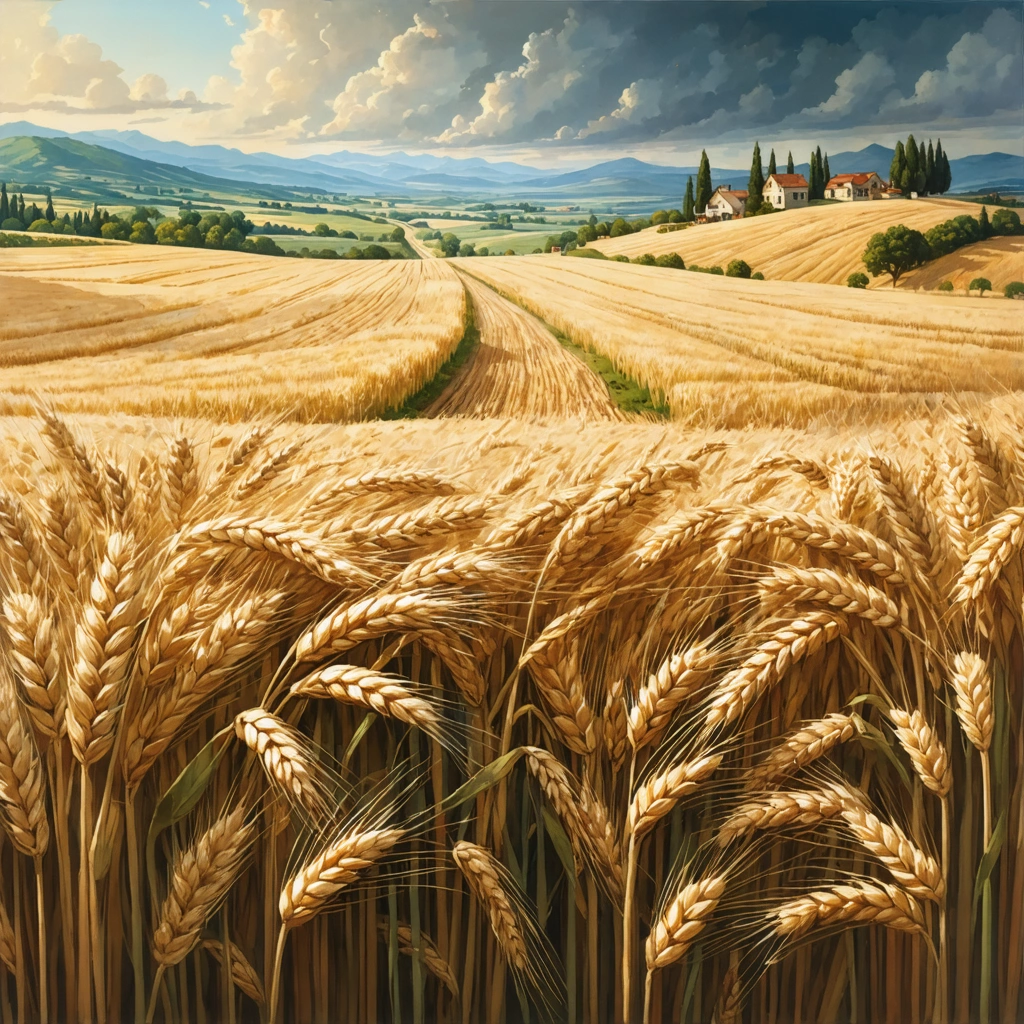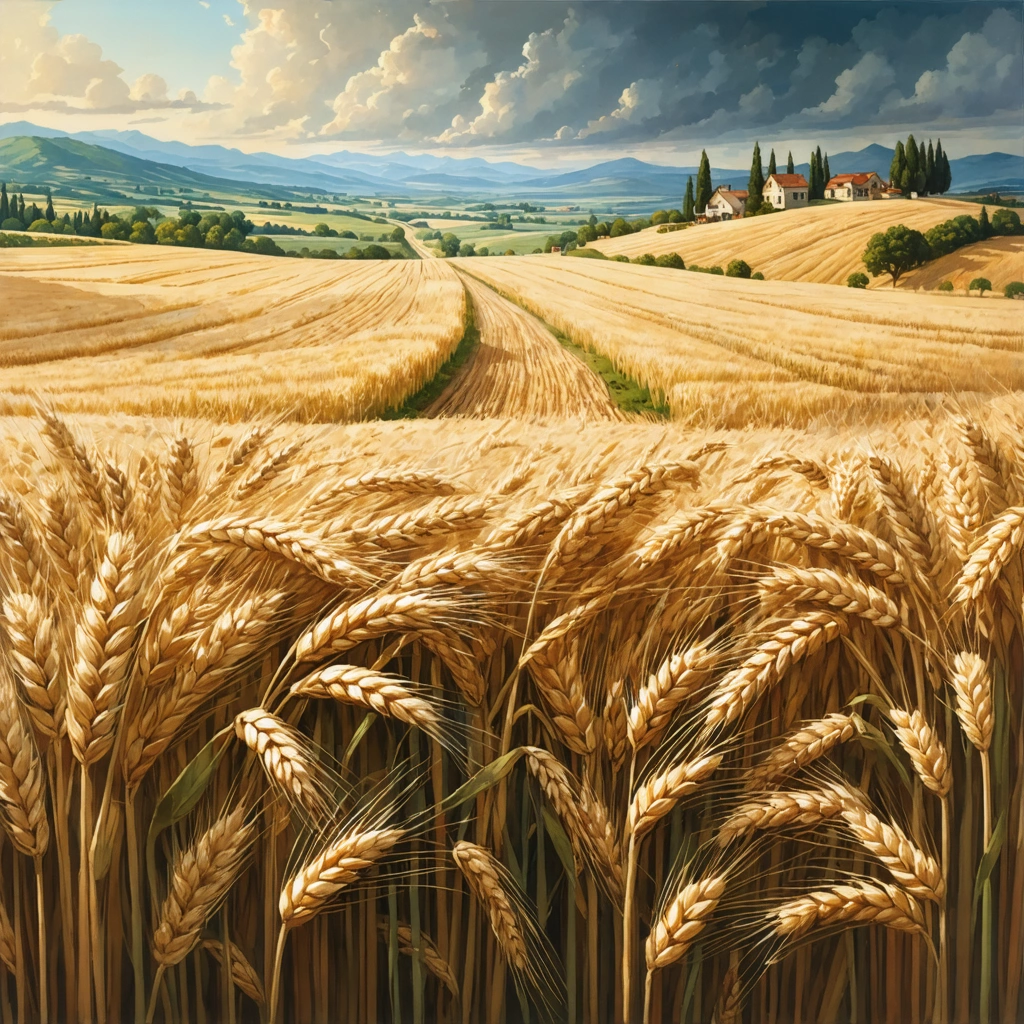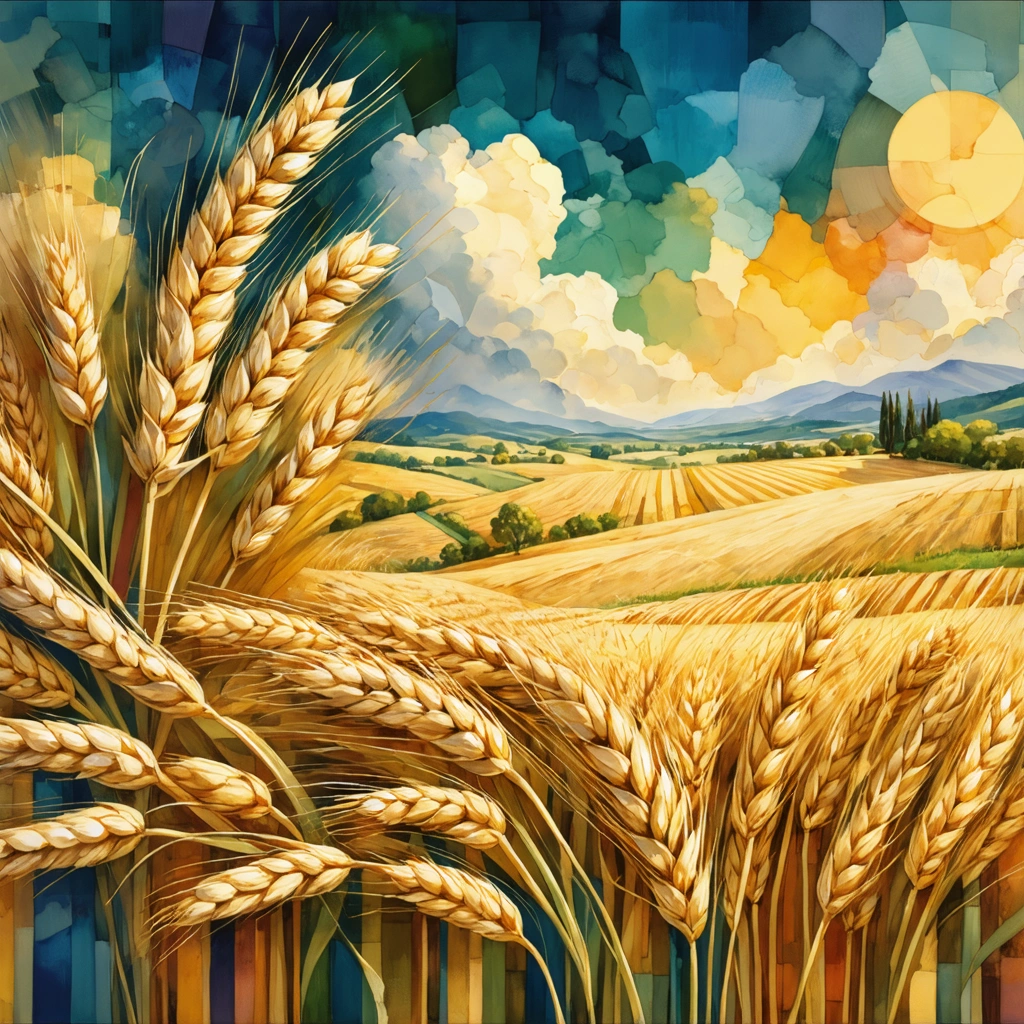
Why Trigo Deserves a Spotlight on Our Plates
Have you ever paused to consider the journey behind the humble slice of bread or the delicate strands of artisanal pasta twirling on your fork? At the heart of these culinary staples lies trigo, the Spanish and Portuguese word for wheat—a grain whose story is woven into the fabric of global diets and cultures. Wheat isn’t just a crop; it’s a culinary cornerstone that has shaped what and how we eat for thousands of years. Yet, despite its omnipresence, many of us overlook the profound influence trigo has on our daily meals and food traditions.
Imagine a world without wheat. No crusty baguettes, no soft dinner rolls, no comforting bowls of spaghetti or lasagna. The diversity and richness of cuisines we cherish would be dramatically diminished. Yet, in the age of superfoods and exotic grains, wheat sometimes gets a bad rap, overshadowed by trendier alternatives. This leads to a curious disconnect: while trigo continues to be a global staple, its story and significance remain underappreciated.
The Unseen Crisis: Underestimating Trigo’s Impact on Food Culture
Why does this matter? Because understanding trigo’s legacy is essential not just for food enthusiasts but for anyone interested in nutrition, agriculture, and cultural heritage. Wheat is more than just a carbohydrate source; it’s a symbol of human innovation and adaptation. From the Fertile Crescent’s ancient fields to modern sustainable farming, wheat’s journey reflects centuries of agricultural mastery and culinary creativity.
Yet, challenges abound. Modern agriculture’s focus on yield has sometimes overshadowed the rich variety of wheat strains that once flourished, and industrial food processing can mask the grain’s true potential. The consequence? Many consumers have become estranged from the authentic flavors and textures that traditional wheat varieties bring to the table. Artisan bakers and pasta makers are now working to revive these qualities, but how many people really appreciate the nuances that trigo imparts?
What’s at Stake?
- Cultural Heritage: Wheat’s cultivation and use are deeply embedded in history, connecting us to ancestors and traditions.
- Nutritional Value: Different wheat varieties offer diverse nutrient profiles that can benefit health.
- Culinary Diversity: The grain’s versatility fuels countless recipes and techniques worldwide.
Ignoring trigo’s legacy risks losing these vital connections, reducing our meals to mere sustenance rather than rich cultural experiences.
Unpacking Trigo’s Role: A Journey Through Culinary Staples
This post will take you on a flavorful expedition through the world of wheat, tracing its path from golden fields to the heart of your kitchen. We’ll explore how trigo forms the backbone of many culinary staples, from the simplest loaf of bread to the most exquisite handmade pasta. Along the way, we’ll uncover the science behind wheat’s unique properties, the artistry involved in transforming it, and the global variations that make it endlessly fascinating.
Whether you’re a home cook eager to deepen your understanding, a food lover curious about the origins of your favorite dishes, or someone passionate about sustainable, traditional foods, this article offers something for you. Prepare to see trigo not just as an ingredient, but as a living legacy—one that continues to nourish and inspire across continents and centuries.
So, let’s break bread together and celebrate the incredible story of wheat, a grain that has truly shaped our plates and palates in ways both profound and delicious.

Trigo: Wheat’s Culinary Legacy and Its Impact on Global Diets
What is Trigo and Why is Wheat Considered a Culinary Staple Worldwide?
Trigo is the Spanish word for wheat, a cereal grain that has been fundamental to human diets for thousands of years. Wheat is one of the most widely cultivated crops globally, serving as a cornerstone of culinary staples across many cultures. Its significance stems from its versatility, nutritional value, and the ease with which it can be transformed into a wide array of food products, from bread to pasta.
Wheat’s adaptability to different climates and soils allows it to be grown in many regions worldwide, making it a reliable food source. As a cereal grain, wheat provides essential carbohydrates, dietary fiber, and some protein, helping sustain large populations. This foundational role in human nutrition explains why wheat is considered a culinary staple in diverse cuisines.
How Has Trigo Shaped Global Culinary Traditions?
Trigo’s influence on global diets is vast and multifaceted. Historically, wheat cultivation dates back to ancient civilizations in the Fertile Crescent, where early humans domesticated it around 10,000 years ago. From there, wheat spread across Europe, Asia, and eventually the Americas, integrating into numerous food traditions.
The grain’s transformation into various culinary forms has shaped eating habits worldwide:
- Bread: Wheat flour is the primary ingredient in bread, a universal food that ranges from French baguettes and Italian focaccia to Middle Eastern flatbreads and Indian chapati.
- Artisanal Pasta: Durum wheat, a hard variety of trigo, is prized for making pasta, a culinary art form particularly associated with Italian cuisine but embraced globally.
- Pastries and Baked Goods: Wheat flour provides the structure and texture essential for cakes, cookies, and other baked treats enjoyed worldwide.
- Breakfast Cereals and Snacks: Processed wheat products contribute to convenient and nutritious breakfast options, as well as diverse snack foods.
These examples illustrate how trigo’s culinary versatility has enabled it to become deeply embedded in diets, influencing not just nutrition but cultural identity and culinary innovation.
What Are the Nutritional Benefits of Wheat and Its Role in Healthy Diets?
Wheat offers several nutritional benefits that have contributed to its status as a dietary staple. It is primarily a source of complex carbohydrates, which provide sustained energy. Whole wheat, in particular, contains dietary fiber that supports digestive health and helps regulate blood sugar levels.
In addition, wheat provides essential micronutrients such as:
- B vitamins (especially folate and niacin)
- Iron
- Magnesium
- Protein, although in moderate amounts compared to legumes or animal sources
Choosing whole wheat products over refined wheat can significantly enhance the nutritional profile of meals, contributing to better heart health and reduced risk of chronic diseases. This nutritional richness explains why wheat remains a critical ingredient in balanced diets globally.
How Does Trigo Influence Modern Culinary Innovations and Artisanal Food Movements?
Beyond traditional uses, trigo continues to inspire culinary creativity. The artisanal food movement, which emphasizes quality, sustainability, and craftsmanship, has revitalized interest in heritage wheat varieties and traditional milling methods. Chefs and food artisans explore ancient and heirloom trigo strains to produce unique flavors, textures, and nutritional profiles.
Examples include:
- Handcrafted breads: Using sourdough starters and long fermentation times to enhance flavor and digestibility.
- Artisanal pasta: Employing slow drying and bronze dies in pasta production to elevate texture and taste.
- Specialty flours: Milling whole grain or stone-ground trigo for use in gourmet baking and cooking.
This resurgence connects consumers with the rich culinary legacy of trigo while promoting sustainable and health-conscious food choices.
What Are the Economic and Cultural Impacts of Wheat Cultivation and Consumption?
Wheat cultivation supports the livelihoods of millions of farmers worldwide, making it a critical economic crop. It drives agricultural economies in countries like the United States, Russia, China, India, and many European nations. The global wheat market is valued in the hundreds of billions of dollars annually, reflecting its importance in food security and trade.
Culturally, trigo is embedded in many rituals, traditions, and cuisines, symbolizing sustenance and prosperity. Celebrations often feature wheat-based foods, and recipes are passed down through generations, preserving culinary heritage.
Understanding the multifaceted role of trigo helps appreciate not only its culinary value but also its socio-economic significance across the globe.
Summary
Trigo, or wheat, is much more than a basic crop; it is a culinary cornerstone that has shaped global diets for millennia. Its versatility as a culinary staple—from bread to artisanal pasta—highlights its integral role in nutrition, culture, and economy worldwide. By embracing the rich legacy of trigo, we deepen our appreciation of the foods that sustain us and the traditions they carry forward.



